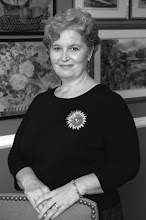The two most powerful weapons are courage and persistence. Nothing can stop a person armed with both. - Scott Sorrel
Armed with courage and persistence the advocates of the Dystonia Advocacy Coalition (DAC) have worked tirelessly these past few years and finally achieved our goal of having dystonia included on the list to be eligible for funding through the Congressionally Directed Medical Research Program. This means, because of the efforts of our dystonia advocates, our researchers will have another source of potential funding – getting more dystonia research going! Dystonia advocates have walked the halls of Congress – meeting with Members and their key staff; met multiple times with Congressional Staff in local offices; and have written letters and made countless calls to make this happen – AND THEY DID IT!
The DMRF has proudly worked with advocates from the Benign Essential Blepharospasm Research Foundation, DySTonia, Inc., the National Spasmodic Dysphonia Association and the National Spasmodic Torticollis Association for over four years to address the legislative and policy needs of the dystonia community. Congratulations to everyone who had a part in this. You have demonstrated that our working together – collaborating on this critical effort – makes a difference and we all have something to celebrate.
Please plan on joining us as we continue our fight for dystonia. The DAC Advocacy Day is scheduled to take place in Washington, DC on May 5 with a training and orientation session planned for May 4th. We look forward to having you there.
Register for Advocacy Day by visiting the following link:
http://www.rsvpbook.com/event.php?470398
Wednesday, December 23, 2009
Monday, December 14, 2009
Myoclonus Dystonia Meeting

Pictured above from left to right: Thomas Gasser, MD, Marie Vidailhet, MD and Susan Bressman, MD
This past weekend the DMRF hosted a meeting on myoclonus dystonia, a form of dystonia with symptoms that include rapid jerky movements, alone or in combination with the sustained muscular contractions and postures. We were fortunate to have the leadership of Drs. Susan Bressman and Marie Vidailhet in developing the agenda and bringing together the best faculty in the world to discuss the status of myoclonus dystonia research, clinical and basic, and to develop a plan for keeping the momentum of progress moving forward. Joining the DMRF for this incredible meeting was esteemed researchers from France, Germany, Italy, the Netherlands, the United Kingdom, Canada and the USA. The agenda included a review of genetics, imaging and neurophysiology, therapeutics, and animal models with a discussion on future directions.
In summarizing the meeting, Dr. Bressman said this was the best workshop she had been involved in for many years. We felt the same way – the energy, the enthusiasm and the spirit of collaboration was amazing and we look forward to implementing the plan for attacking myclonus dystonia.
Having these kinds of meetings is an important part of the DMRF’s scientific strategy – implemented and operated by our full time Science Officer, Jan Teller, PhD, and our Medical and Scientific Director, Mahlon DeLong, MD of Emory University. Supporting research, awarding fellowships and contracting for specific scientific work is very important but so too are these meetings when we are able to bring great minds together to discuss a specific topic and develop next steps.
We are so thankful to all who participated in the meeting and to everyone in the dystonia research community for their dedication and commitment to ending all forms of dystonia.
Monday, December 7, 2009
The DMRF: A Critical Piece of the Dystonia Puzzle

Starting a scientific career is a daunting proposition, especially for a physician-scientist that has clinical as well as lab responsibilities. Yet, it is physicians who witness first hand the struggles of patients, and this knowledge can be a powerful motivator for scientific discovery -- even when the underlying science is unknown and therefore “off the radar” of basic investigators.
The DMRF has provided essential support to my scientific career, both at the critical early stage, as well as at later stages. Shortly after the gene encoding torsinA was discovered, I received a grant from the DMRF to generate torsinA mutant animals. This grant - to a young and untested physician-scientist – was helpful in supporting the work but, perhaps as importantly, gave me an early track record of securing funding and was therefore helpful in me getting other grants, both from the Howard Hughes Medical Institute as well as the NIH. The ongoing support of the DMRF also enabled me to hire and support Rose Goodchild, an outstanding young scientist who now has an independent lab of her own (studying torsinA). Moreover, the DMRF has consistently organized and supported basic science and clinical workshops that have been invaluable in helping to integrate and focus the dystonia research community. I have found these meetings invaluable, both scientifically and as a place where trainees in my laboratory (and others) can begin to present their work and develop confidence as scientists. The DMRF has consistently focused on identifying and supporting the best science, and I’m convinced that we’d be far, far further from our goal of improving the treatment and hopefully cure of dystonia without the many valuable DMRF-supported activities.
Guest Blogger:
William Dauer M.D.
Elinor Levine Associate Professor
Neurology & Cell and Developmental Biology University of Michigan Medical School
Would you like to know more about DMRF grant funding opportunities?
http://www.dystonia-foundation.org/pages/funding_opportunities/142.php
The deadline for all applications is December 15, 2009. Visit http://www.dystoniagrants.org to view the application form.
Subscribe to:
Comments (Atom)





